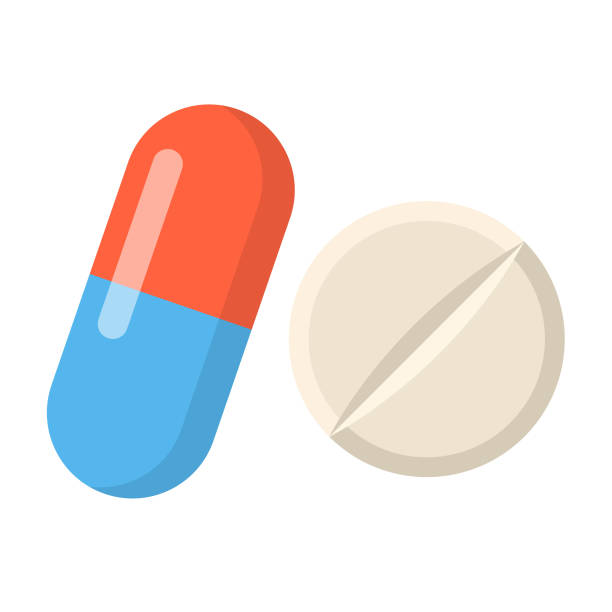Tapentadol Hydrochloride
Indications
Tapentadol is indicated for the relief of moderate to severe acute pain in patients 18 years of age or older.
Pharmacology
Tapentadol is a centrally-acting synthetic analgesic. It is 18 times less potent than morphine in terms of binding to human mu-opioid receptors. It also increases norepinephrine concentrations in the brains of rats via inhibition of norepinephrine reuptake. Selective mu-opioid antagonists like naloxone can block analgesia from tapentadol. It also has not effect on the QT interval.
Tapendadol causes large increases in levels of extracellular norepinephrine (NE) due to a dual mechanism of action involving mu opioid receptor (MOR) agonism as well as noradrenaline reuptake inhibition.
Dosage And Administration
As with many centrally-acting analgesic medications, the dosing regimen should be individualized according to the severity of pain being treated, the previous experience with similar drugs and the ability to monitor the patient.
The dose is 50 mg, 75 mg, or 100 mg every 4 to 6 hours depending upon pain intensity. On the first day of dosing, the second dose may be administered as soon as one hour after the first dose, if adequate pain relief is not attained with the first dose. Subsequent dosing is 50 mg, 75 mg, or 100 mg every 4 to 6 hours and should be adjusted to maintain adequate analgesia with acceptable tolerability.
Daily doses greater than 700 mg on the first day of therapy and 600 mg on subsequent days have not been studied and are not recommended.
Interaction
Increased risk of serotonin syndrome with other drugs that enhance monoaminergic neurotransmission (e.g. TCAs, triptans, SSRIs, serotonin and norepinephrine reuptake inhibitors). Enhanced sedative effect with benzodiazepines, barbiturates, antipsychotics, H1-antihistamines and other opioids. Increased potential for addiction with mixed μ-opioid agonists/antagonists (e.g. nalbuphine, pentazocine) or partial μ-opioid agonists (e.g. buprenorphine). Increased systemic exposure with strong inhibitors of UGT1A6, UGT1A9 and UGT2B7 isoenzymes. Decreased efficacy with strong enzyme inducers (e.g. rifampicin, phenobarbital).
Contraindications
This drug is contraindicated in patients with impaired Pulmonary Function, It is also contraindicated in patients with acute or severe bronchial asthma or hypercapnia in unmonitored settings or the absence of resuscitative equipment. This drug is contraindicated in any patient who has or is suspected of having paralytic ileus.
Side Effects
The following treatment-emergent adverse events may happen: heart rate increased, heart rate decreased, visual disturbance, abdominal discomfort, impaired gastric emptying, irritability, edema, drug withdrawal syndrome, hypersensitivity, involuntary muscle contractions, sensation of heaviness, hypoesthesia, paresthesia, disturbance in attention, sedation, dysarthria, memory impairment, ataxia, presyncope, syncope, coordination abnormal, seizure, urticaria, blood pressure decreased etc.
Pregnancy And Lactation
Pregnancy Category C. There are no adequate and well-controlled studies in pregnant women. This preparation should be used during pregnancy only if the potential benefit justifies the potential risk to the fetus.
Neonates whose mothers have been taking Tapentadol should be monitored for respiratory depression.
Precautions And Warnings
Tapentadol should be administered with caution to patients with conditions accompanied by hypoxia, hypercapnia respiratory problems such as: asthma, chronic obstructive pulmonary disease etc. Besides this in case of patient with sleep apnea syndrome, myxedema, kyphoscoliosis, central nervous system (CNS) depression should have to be cautious prior administration of Tapentadol. Patients receiving other mu-opioid agonist analgesics, general anesthetics, phenothiazines, other tranquilizers, sedatives, hypnotics, or other CNS depressants (including alcohol) concomitantly with Tapentadol may exhibit additive CNS depression.
Overdose Effects
Symptoms: Vomiting, miosis, CV collapse, consciousness disorders up to coma, convulsions and resp depression up to resp arrest.
Management: Re-establish a patent airway and institute assisted or controlled ventilation. GI decontamination with activated charcoal or by gastric lavage may be considered within 2 hr after intake. Pure opioid receptor antagonists (e.g. naloxone) may be given as antidote.
Therapeutic Class
Opioid analgesics
Use in special populations
Pediatric use: The safety and effectiveness of Tapentadol in pediatric patients less than 18 years of age have not been established.
Use in elderly patients: In general, recommended dosing for elderly patients with normal renal and hepatic function is the same as for younger adult patients with normal renal and hepatic function. consideration should be given to starting elderly patients with the lower range of recommended doses.
Use in Renal Disease: In patients with severe renal impairment, the safety and effectiveness of Tapentadol has not been established.
Use in Hepatic Disease: Tapentadol should be used with caution in patients with moderate hepatic impairment. Tapentadol has not been studied in patients with severe hepatic impairment.
Storage Conditions
Store in a cool and dry place, protected from light and moisture. Keep the medicine out of the reach of children.
